An investment property is any property used to generate income. Depending on how long you hold the property, you can make money in one of two ways. The first way is to rent the property out and receive a monthly rental income. The second way is to generate a return by selling the property for a higher price than what you purchased it for (i.e., "price appreciation"). Typically, real estate investors use a combination of both. Below are some approaches and key terms you should know.
Buy & Flip
Many investors choose to buy property in emerging neighborhoods that will be in demand. Properties in emerging neighborhoods enable investors to get in while prices are still low. Another approach will be to buy in already in demand areas, where housing value continues to rise. The goal of a flip is to sell the property as quickly as possible for a healthy return on investment. This may require putting money into renovating the property to current market standards.
Buy & Hold
The Buy and Hold approach takes the long view. With Buy and Hold an investor can simply hold onto the property for years before they sell, or partner with a developer to develop the property.
Cap Rate
The Cap Rate or Capitalization Rate is key when purchasing a rental income property. The Cap Rate is the amount of cash flow generated via renting out the property divided by the purchase price. A lower cap rate implies that the property is more valuable and less risky due to type, class, and market. While a higher cap rate offers investors a higher return, that property investment typically has a higher risk profile.
Property Type (Single Family/Multi Family)
In New York City, Townhouses, Brownstones, and Detached Homes can be set up as either a single family or multi-family dwelling. As an investor, multifamily properties are advantageous as they enable you to rent out each unit. Condos versus Co-ops: Condos are best for investment properties as they have less stipulation in property use.
Upstate & Surrounding Counties
The further away you get from New York City, the less costly the price of property. Property and land two to three hours outside of New York, for example, can be a fraction of the costs in the City. Talk to your Realtor: he or she may be able to guide you to counties where your return on investment can be much higher.
